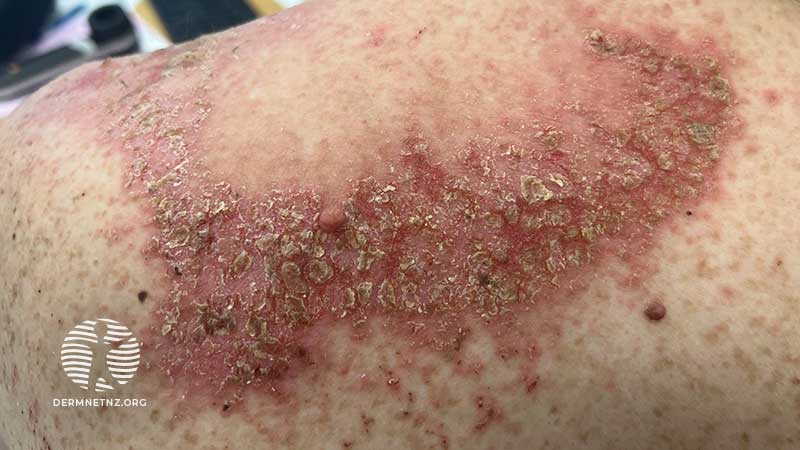Main menu
Common skin conditions

NEWS
Join DermNet PRO
Read more
Quick links
40-year-old woman with chronic crusted skin lesions
Last reviewed: December 2023
Author: Stanley Leong, Dermatology and Paediatric Registrar, December 2023.
Reviewing dermatologist: Dr Ian Coulson (2023).
Edited by the DermNet content department

Background
This 40-year-old woman has a longstanding history of crusted skin lesions since she was 12 years old. Lesions started on her neck, axillae, and upper back. They flare up intermittently with increasing pain and malodorous discharge.
Many family members (including her grandfather, father, uncles, and twin sister) have similar lesions.
On examination, she had confluent, crusted, greasy papules across the upper back, lateral neck, and axillae. She also had nail changes.
What is the most likely diagnosis?
Darier disease, an autosomal dominant genodermatosis. It typically presents with scaly, crusted papules in a seborrhoeic distribution and in skin folds.
It is caused by a mutation in the ATP2A2 gene, which leads to SERCA2 protein dysfunction, interfering with cellular calcium signaling. This results in impaired cellular adhesion and epidermal blistering.
What are the clinical features of this condition?
The signs and symptoms of Darier disease can vary markedly between individuals. The severity of the disease can also fluctuate over time.
- Prevalence ranges from 1:30,000 to 1:100,000.
- Onset usually occurs between 6–20 years, peaking during adolescence.
- Typically follows a chronic, relapsing-remitting course; often worse in the summer.
- Crusted papules (3-5mm) that may coalesce into plaques are typical.
What may be seen on the nails?
As well as skin lesions, nail dystrophy is usual with longitudinal pink bands with V and Y notching of the distal end of the nail plate.
Name 3 histological features.
Cardinal features include:
- Dyskeratosis
- Acantholysis
- Corps ronds.
What are the treatment options?
There is currently no cure for Darier disease. Avoidance of triggers and symptom management are the mainstay of management.
General measures include wearing lightweight clothes, antiseptic washes, and humectants.
Additional measures, if required, may include topical and oral retinoids, doxycycline, oral magnesium, ciclosporin, dermabrasion, or laser.
See: Darier disease.
